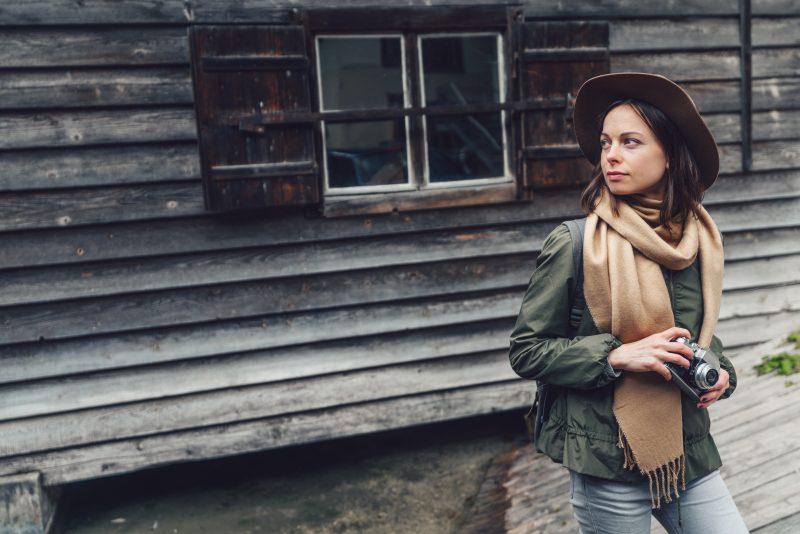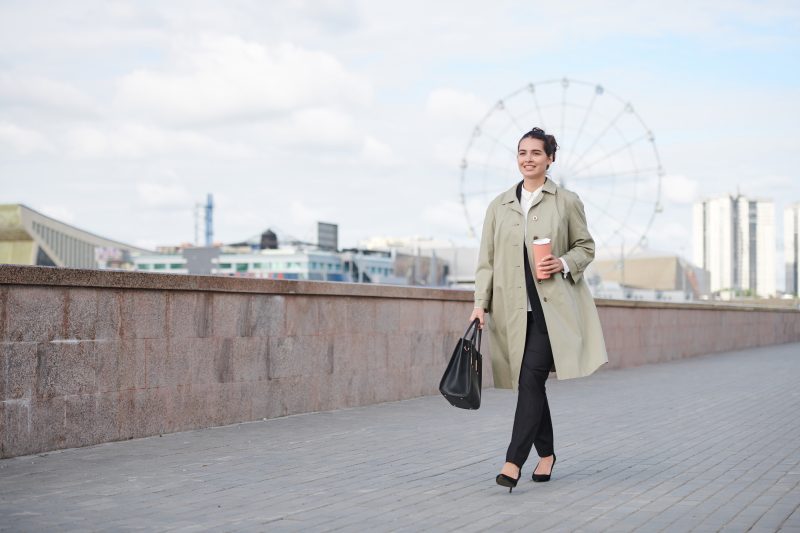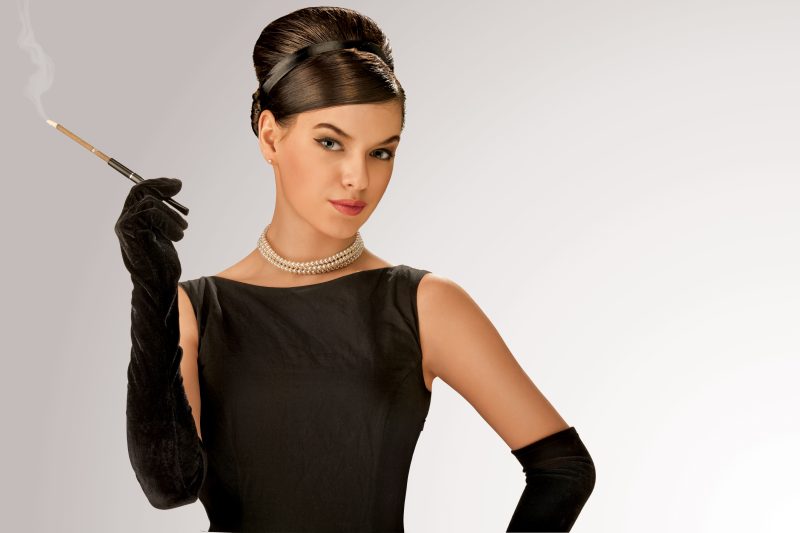“For God’s sake, Harper, just tuck in your shirt.”
My grandmother’s voice still echoes in my head sometimes when I’m getting dressed. She was a proper Southern lady who believed firmly that untucked shirts were a sign of moral decay, right up there with chewing gum in public and wearing white after Labor Day. In her world, shirts were meant to be tucked, sweaters were meant to be buttoned, and accessories were meant to match your shoes. Period.
Which is why she would absolutely lose her mind if she could see what I did to a perfectly respectable button-down yesterday. Not only was it untucked, it was half-tucked—deliberately, precisely half-tucked, with one section neatly secured into my waistband and the rest hanging loose, creating an asymmetrical hemline that looked simultaneously accidental and meticulously planned. The fashion term for this is “the French tuck” (though it’s neither French nor really a tuck, discuss), and it’s the styling trick that refuses to die.
I was at a fashion editors’ lunch last week when the topic came up. We were doing that thing fashion people do where we deconstruct each other’s outfits while pretending we’re just making casual conversation. Simone from Vogue was wearing wide-leg jeans with a classic white button-down, but the shirt was tucked just in the front, leaving the back to hang free.
“Are we still doing the French tuck?” asked Katherine from Harper’s, one eyebrow slightly raised to indicate that the question wasn’t entirely neutral. “I thought we’d moved on.”
Simone touched her partial tuck defensively. “It’s practical. I can eat without feeling constricted.”
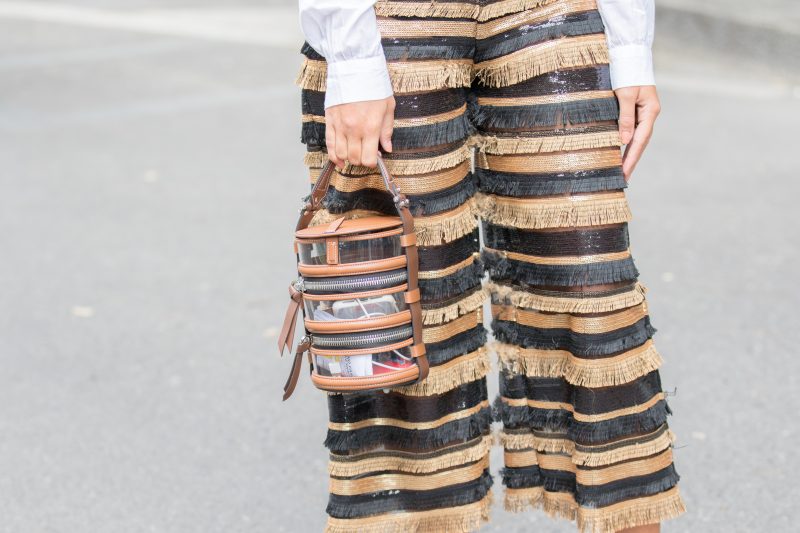
“It’s dated,” countered Katherine. “Very 2019 Queer Eye.”
I stayed silent, partly because I was doing the exact same tuck under the table and hadn’t decided yet if I would defend it as timeless or sacrifice it to the gods of fashion evolution. That’s the thing about these little styling tricks—they can elevate your outfit from basic to considered, or they can instantly date you, sometimes simultaneously. And the half-tuck might be the most divisive styling move of them all.
So what exactly is this controversial technique? In its most common form, it’s simply tucking in just the front portion of your shirt or sweater, creating a cascading effect around your waistband. The look reads as effortless (even though it usually involves at least three mirror checks and occasional bathroom readjustments). It’s meant to give structure while maintaining a relaxed vibe, to highlight your waist without committing to full waistband exposure.
Entire Pinterest boards are dedicated to the proper execution of the half-tuck. Tan France of Queer Eye famously evangelized it to the masses. And fashion editors across America have been quietly employing it for years to make outfits look more editorial in street style photos.
The technique isn’t exactly new—French girls (actual ones, not the mythological beings of Instagram) have been doing some version of it for decades. But it reached peak mainstream around 2018-2019 when suddenly everyone’s mom was tentatively trying it with her holiday family photo outfit after seeing it on a department store mannequin.
That’s usually when fashion insiders start backing away from a trend—when it hits the mannequins at Macy’s. But strangely, the half-tuck has persisted in fashion circles far longer than most insider tricks. I’ve spotted it on runway stylists prepping models at New York Fashion Week. I’ve seen it in the pages of Vogue. I watched a famous designer absentmindedly adjust her own half-tuck while giving a panel talk on the future of fashion.
“It’s because it actually works,” insists my friend Emma, a stylist for several celebrity clients. “Unlike most fashion ‘rules’ that only look good on 22-year-old models, the French tuck is genuinely flattering on different body types. It creates a waistline without the discomfort of a full tuck. It adds intentionality to simple pieces.”
To test whether the half-tuck truly deserves its staying power, I decided to apply it systematically to my most basic outfits for a week, documenting the transformation (or lack thereof).
Day 1: The Classic Button-Down
I started with the most traditional canvas—a slightly oversized oxford shirt paired with straight-leg jeans. Worn completely untucked, it read as deliberately oversized but veered into sloppy territory. Fully tucked, it looked proper but unremarkable, like I was headed to a job interview at a bank in 2005. With the half-tuck—just the front portion secured—the shirt suddenly had attitude. The proportions looked intentional rather than accidental.
My doorman, who has witnessed seven years of my fashion experiments with stoic indifference, actually commented: “You look nice today.” When I asked what was different, he couldn’t pinpoint it. That’s the magic of good styling—people don’t notice the technique, just the improved overall effect.
Day 2: The Chunky Sweater
This was the real test. Bulky knits are notoriously difficult to tuck in any capacity without looking like you’re smuggling a small throw pillow in your pants. I tried a heavy fisherman sweater with a midi skirt—fully untucked, it overwhelmed my frame and cut me off at an awkward point. Fully tucked was physically impossible without creating bizarre bulges. The half-tuck, however, gave just enough shape while letting the sweater do its cozy thing.
I wore this outfit to meet my most fashionable friend for coffee. She narrowed her eyes when I sat down. “You look different. Did you get a haircut?”
“Nope. Just trying something with my sweater.”
She studied me for a moment, then nodded. “The tuck. Bold choice with that weight of knit. It’s working though.”
Day 3: The T-Shirt
Basic white tees are the backbone of my weekend wardrobe, usually paired with jeans or shorts depending on the season. Untucked, a tee and jeans is the uniform of someone who has given up. Fully tucked can look either vintage cool or like you’re about to do PE in middle school. The half-tuck added just enough polish to elevate the combination from “I woke up like this” to “I woke up like this, but then I made some effort.”
I wore this look to the farmer’s market, where I ran into two separate acquaintances who both commented that I looked “put together” for a Sunday morning. Little did they know it was literally just a $20 Hanes tee with one section tucked in.
Day 4: The Silky Blouse
Here’s where things got interesting. A flowy silk blouse with tailored trousers is already a polished combination. Untucked, it’s elegant but safe. Fully tucked, it’s corporate-appropriate but unremarkable. With the half-tuck, however, it took on a slightly undone quality that felt modern and a bit sexy, like I’d just partially untucked it after a long day but somehow it looked better that way.
I wore this to an industry dinner where seating always feels like a high school cafeteria popularity contest. I ended up next to the fashion director of a major publication who studied my outfit with that quick up-down assessment fashion people are so good at. “That blouse is gorgeous,” she said. “The way you’ve styled it is very now.” Coming from her, this was the equivalent of a standing ovation.
Day 5: The Flannel Shirt
The half-tuck’s true versatility became apparent when I applied it to a deliberately casual piece—an oversized flannel shirt I usually wear as a light jacket. Untucked over jeans, it’s weekend cabin vibes. Fully tucked, it feels like I’m trying too hard to make a casual piece formal. The half-tuck split the difference, giving structure without sacrificing the relaxed essence of the garment.
I wore this to work, where my intern—Gen Z and therefore the arbiter of all things cool—gave me an approving nod. “That’s how Bella Hadid wears her flannels,” she observed. I didn’t tell her I’d been doing this particular tuck since before Bella was booking major campaigns.
After a week of methodical half-tucking, I’ve come to some conclusions about this controversial styling trick:
First, it’s far more versatile than critics give it credit for. It works across different garment types, body shapes, and occasions. Unlike many fashion insider tricks that require model proportions or an editor’s clothing budget, this one is genuinely democratic.
Second, it creates visual interest through asymmetry without requiring additional items or accessories. In a world where sustainable fashion means doing more with fewer pieces, that’s no small consideration.
Third, it’s practical. A half-tuck allows freedom of movement, accommodates eating a large meal (a serious consideration in my line of work), and doesn’t create the constant need for readjustment that a full tuck often does.
But perhaps most importantly, it achieves what the best styling tricks do—it makes clothes look considered rather than simply worn. There’s intention behind a half-tuck, a tiny decision that communicates “I thought about this outfit” rather than “I just needed to not be naked today.”
That said, I understand the backlash. When a styling technique becomes too ubiquitous, too instructional (step one: grab shirt, step two: tuck front only), it can feel formulaic rather than creative. And fashion, at its core, should retain some element of creative self-expression.
“The problem isn’t the half-tuck itself,” my friend Tyler, a menswear designer, told me over drinks. “It’s that it became prescribed rather than intuitive. Styling should be personal. The second it becomes a universal rule, it loses its edge.”
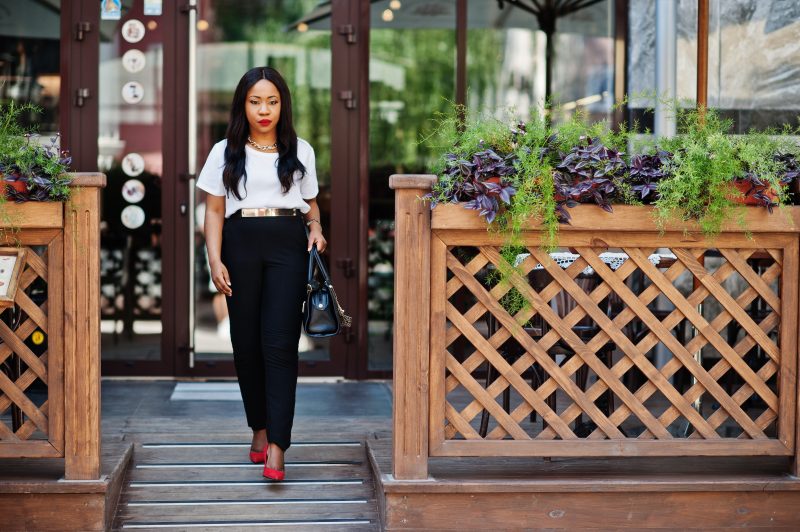
He has a point. Perhaps the best styling tricks are the ones we arrive at naturally through experimentation rather than through TikTok tutorials. Maybe my grandmother’s strict tucking rules and my teenage rebellion against them created my personal path to the half-tuck long before it had a cutesy name.
So where does that leave the controversial half-tuck? Is it a timeless technique or a dated trend?
Like most questions in fashion, the answer is nuanced. I’d argue that the half-tuck works best when it’s not followed prescriptively but adapted to your specific clothes, body, and aesthetic. Sometimes it might be just the front center that gets tucked, creating a subtle point. Other times it might be the entire front half while the back hangs free. Occasionally, it might even be a side tuck that creates an asymmetrical drape.
The key is that it should look natural and unforced—like you just happened to tuck in part of your shirt while reaching for something and it accidentally looked amazing. The second it appears calculated is the second it loses its magic.
As for me, I’m not abandoning my half-tucks anytime soon, despite the raised eyebrows from certain fashion director friends. It’s become part of my style language, a small but significant way I communicate through clothes. My grandmother would still be horrified, of course, but I like to think even she might admit—after a martini or two—that it looks better than leaving everything completely untucked.
That, in fashion terms, is what we call progress.

